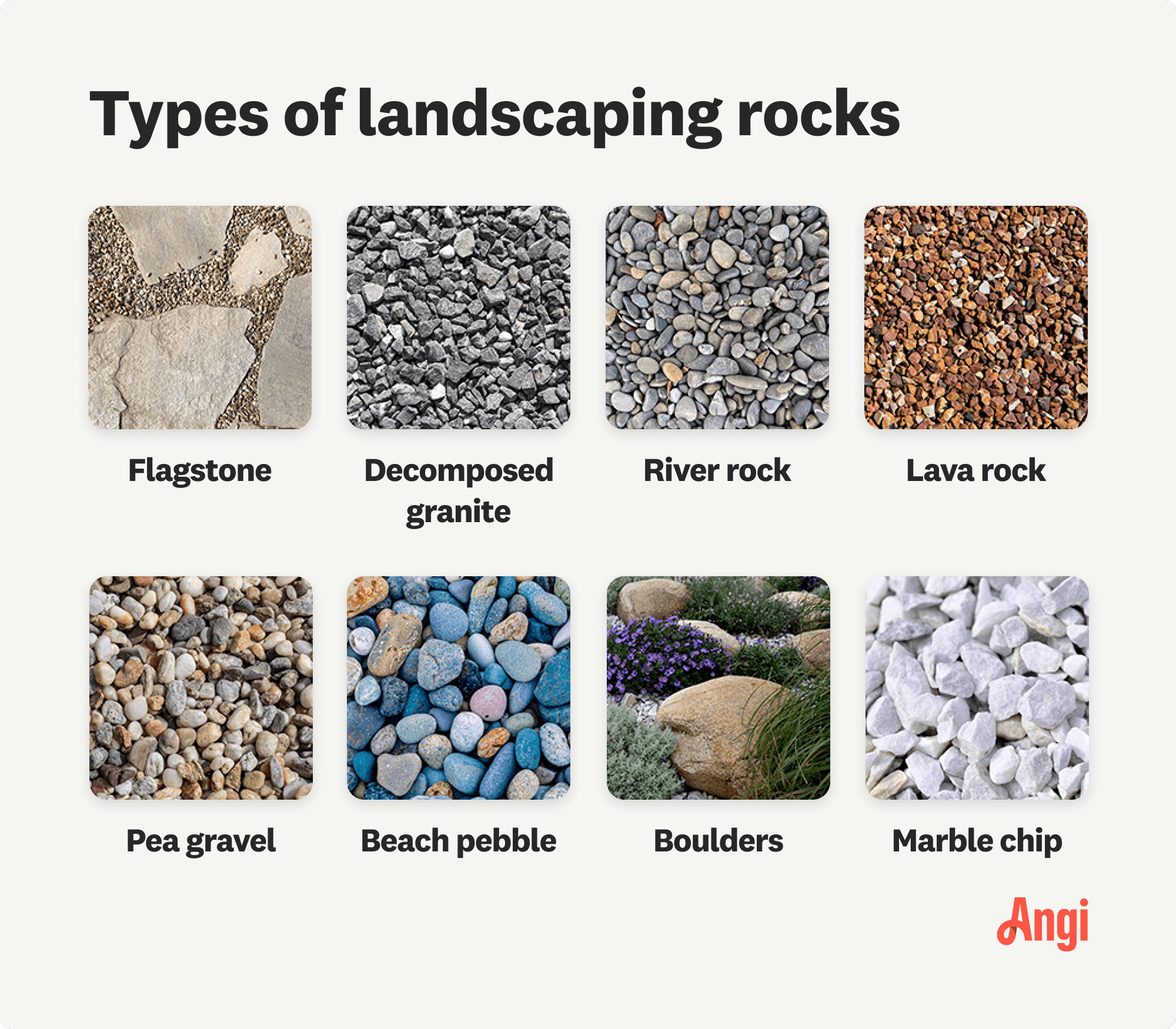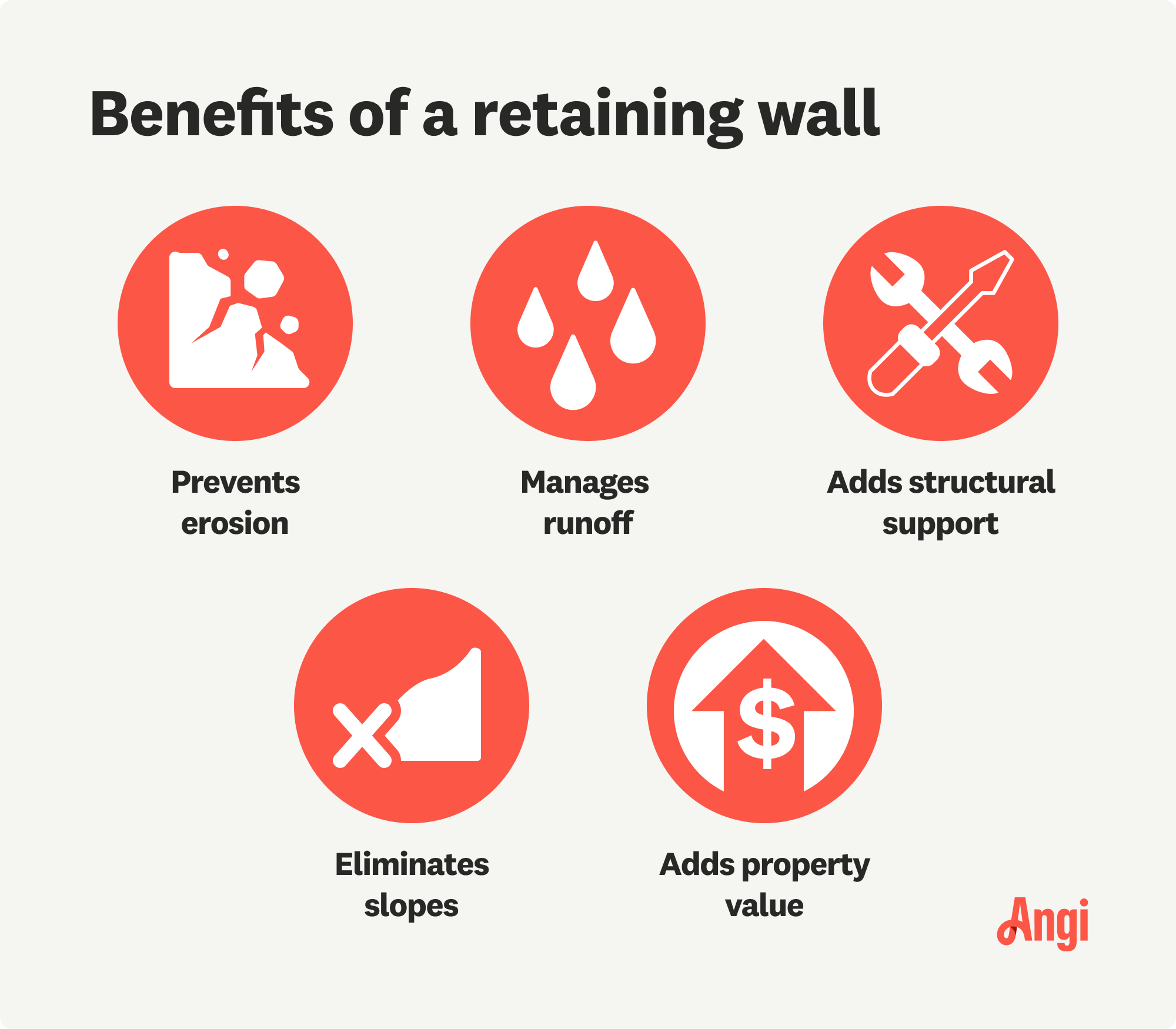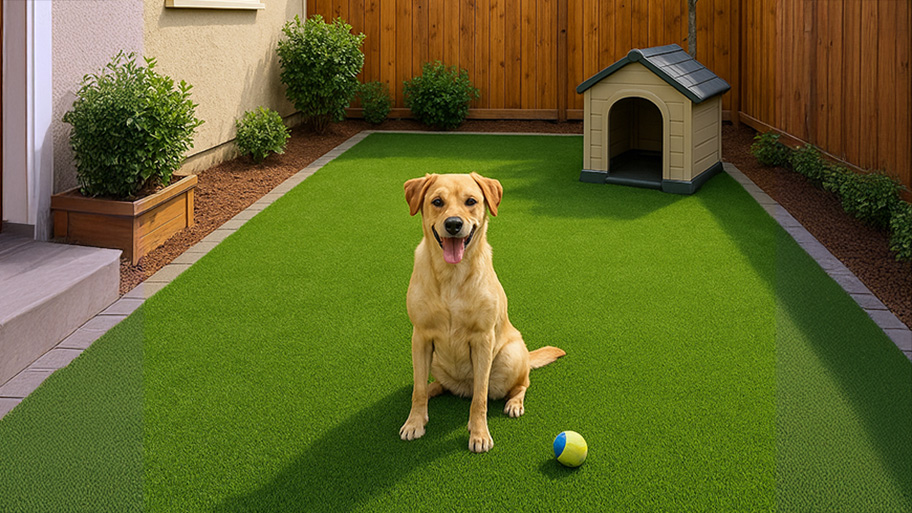
Leveling your yard can help with drainage and prevent damage to your home. Learn the cost to level a yard in Columbus, OH, and what factors can affect the price.
Stabilize your soil with these erosion control strategies


Sloped and hilly land is vulnerable to erosion, which can cause a number of issues, including soil damage, poor plant growth, and structural and aesthetic problems. Fortunately, there are plenty of measures you can take to prevent it from washing away your yard. Below, we’ll explain how to stop erosion on a slope in several different ways, including with mulch, plants, and riprap.
Laying mulch is one of the easiest ways to stop erosion on a hill. Keep in mind, though, that this only works for slopes of 33% or less. You’ll start by calculating how much mulch you need. Then, you can buy the mulch from a nearby home improvement store or have it delivered by a local supplier.
Before laying the mulch, you should remove any weeds on the slope. You might also want to use a pre-emergent herbicide to prevent future growth. For effective erosion control, the mulch layer should be between 3 and 4 inches thick.

Like mulch, landscaping rocks are another simple way to manage erosion on a slope. To install them, you’ll begin by removing any weeds on the hill (and, optionally, applying an herbicide). You can also install landscape edging to keep the landscape rocks in place. Then, using an iron rake, spread the landscaping rocks along the ground. It should be 2 to 3 inches deep.
Ground cover plants and shrubs can also stop erosion since their roots help keep the soil in place and protect it from movement. Plus, they can add an extra touch of natural beauty to your yard.
Just like mulch and landscaping rocks, adding ground cover plants or shrubs is a DIY-friendly landscaping project. Clear the hill of any weeds, then lightly till the soil before planting if your slope is 33% or less. (Don’t till the soil if you have a steeper slope because it can worsen erosion.)
To prevent overgrowth, you can install landscape curbing along with your plants. If you do, you’ll want to place it where the ground cover meets the grass or garden beds. Once the plants are in the ground, take time to water them each day until they’re well established.
Like mulch, an erosion control blanket sits on top of the soil. Once installed, it helps keep the soil in place underneath the blanket but lets runoff flow over it.
Like the other erosion control methods we’ve mentioned, you’ll need to clear the slope of any weeds and debris before installing one of these blankets. If you have a large hill, forestry mulching is a quick and convenient way to do this.
The next part of the process is a little more complicated. It involves digging a trench, securing the blanket with ground staples, and working the blanket around shrubs and trees. If that doesn’t sound appealing, this is a project to hand over to a local landscape grading pro.
Riprap is a layer of large rocks and stones that sits next to moving bodies of water, including oceans, streams, and rivers. Its primary purpose is to stop erosion, but it’s also used in stormwater management systems.
Riprap rocks are big and heavy, so it’s best to hire a professional for this method. In most cases, they’ll have to use heavy equipment to get the rocks in place. Plus, depending on the grade of your slope, they might also have to regrade the land.

Adding a retaining wall is another way to stop runoff from flowing downward and causing erosion. If you’re a confident DIYer, you can build a retaining wall yourself. Otherwise, it’s best to bring in a pro—especially if the wall is more than 3 feet tall.
If you’re curious about the process of building a retaining wall, here’s a quick summary. It starts with measuring and marking the location of the wall, then digging a trench and filling it with gravel. For the wall itself, a pro will lay rows of staggered concrete blocks and top everything off with a layer of capstone blocks.
If you have an extreme slope or your area receives significant amounts of rain, you should consider hiring a pro to install an exterior drainage system. A French drain, for example, can reroute water from the upper part of a slope to a safe drainage location on your property.
You can create just about any landscape design on a hill, but if you have a severe slope a professional landscaper can help install new drainage. Pooling water can lead to damaged plants and yards.
Installing a French drain is a labor-intensive project that requires numerous tools and supplies and some heavy-duty equipment. It’s a complicated job that very few DIYers are equipped to handle.
Window Depot did an amazing job on my deck. I wasnt sure what I wanted to do, but their composite decking was affordable and will last a long time. I am excited to have family over, and I am no longer embarrassed by my backyard. Jeff and the ground crew were polite, respectful, and caring for...
We had a 20+ year old landscape lighting system that needed replacement. Midwest Lightscapes worked with us to design a much improved lighting system, lighting the exterior of the house and the back yard. Installation of the 45 light system took one and one-half days, and went very smoothly....
We used Unique Hardwood Floor LLC three years ago to work on the floors of a 70 year old home that needed a great deal of work. Some floors needed repairs, some were replaced and others just needed to be refinished. It was a complicated job as they needed to blend the old and the new to...
Phil and his team did a great job. He listened to our needs and took care of everything. The team was polite and answered our questions along the way. They were flexible to last-minute requests. Our new patio looks beautiful. I would use Garden of Eden Landscaping again, and highly recommend...
Norman responded to the voicemail that I left describing the situation within an hour of having left it. He was already on a job in our area and offered to come over the same day to assess the situation and give an estimate. Once he saw what we needed we set up a time 3 days later for him and...
They have been great to work with. Luke Henry, the Proscape owner is always accessible and responsive to our needs. He has met us at our property several times to discuss ideas to improve our landscape. His crews show up as planned and we are very pleased with their work. We will continue our...
From start to finish this company amazed us. After three long years of quote after quote we found who we were looking for right around the corner from us. We had a detached 2 car garage that was going unused becuase the driveway that had been there when the house was built in 1959 had long...
I've been using Landscape Direct for 17 years. Brad is very knowledgeable and has designed and planted beautiful flower beds for me. He also does weekly mowing service at a very reasonable price. One of the bright spots following a snow storm is hearing Brad arrive to plow the drive and...
All around they have done a really great job. I have used JL Landscapes for the past 8 years. I own and operate my own commercial/residential real estate company where we own, operate, and maintain our own properties. JL Landscapes has been our exclusive landscaper for both our business...
The worker came out when he was supposed to come. He informed me he would honor the Angie's List deal, but would not do any more work for me since my son in law owns lawn care company as well, even though they do not do the same type of work. He said he did not feel comfortable giving me...
From average costs to expert advice, get all the answers you need to get your job done.

Leveling your yard can help with drainage and prevent damage to your home. Learn the cost to level a yard in Columbus, OH, and what factors can affect the price.

A landscape designer can elevate your outdoor space and bring your vision to life. Use this landscape design cost guide to budget for your next project.

The cost to remove a boulder depends on the size, location, and equipment needed. Learn the average boulder removal cost and how to save money on removal.

Boulders can make a statement in your landscape, from retaining walls to decorative features. This guide breaks down how much landscape boulders cost.

Wondering how to clean dog urine off artificial grass? Revitalize your turf (even if it's pet-friendly) with this simple seven-step cleaning guide.

Regrading around your foundation can help prevent water damage to your home. Learn how to build up soil around the house foundation for better drainage.